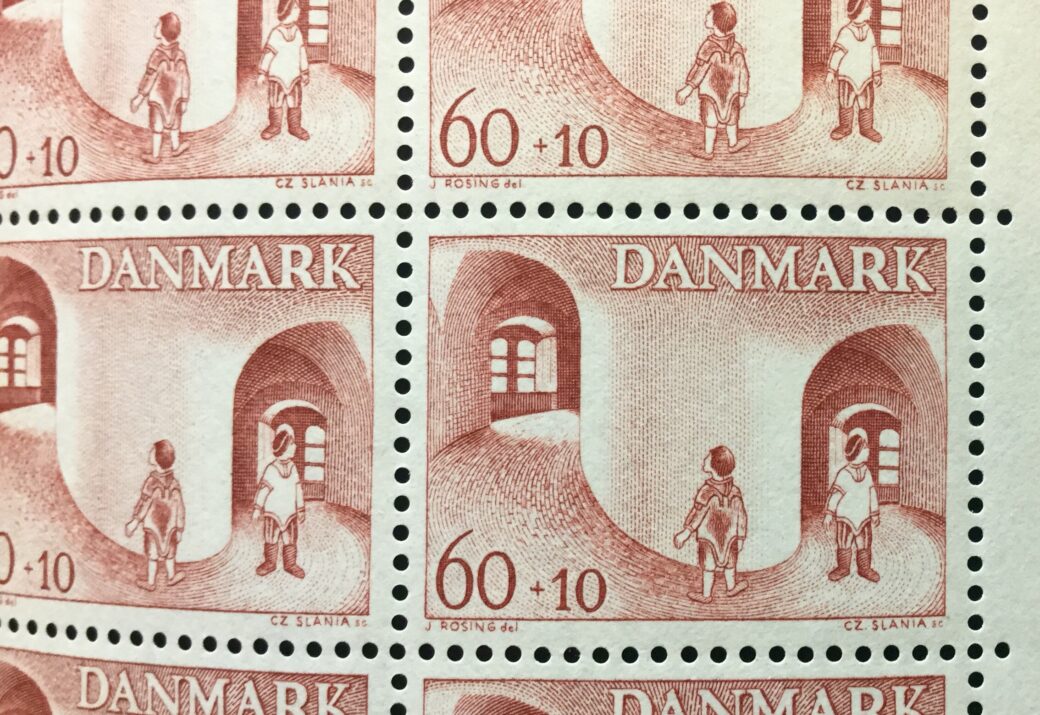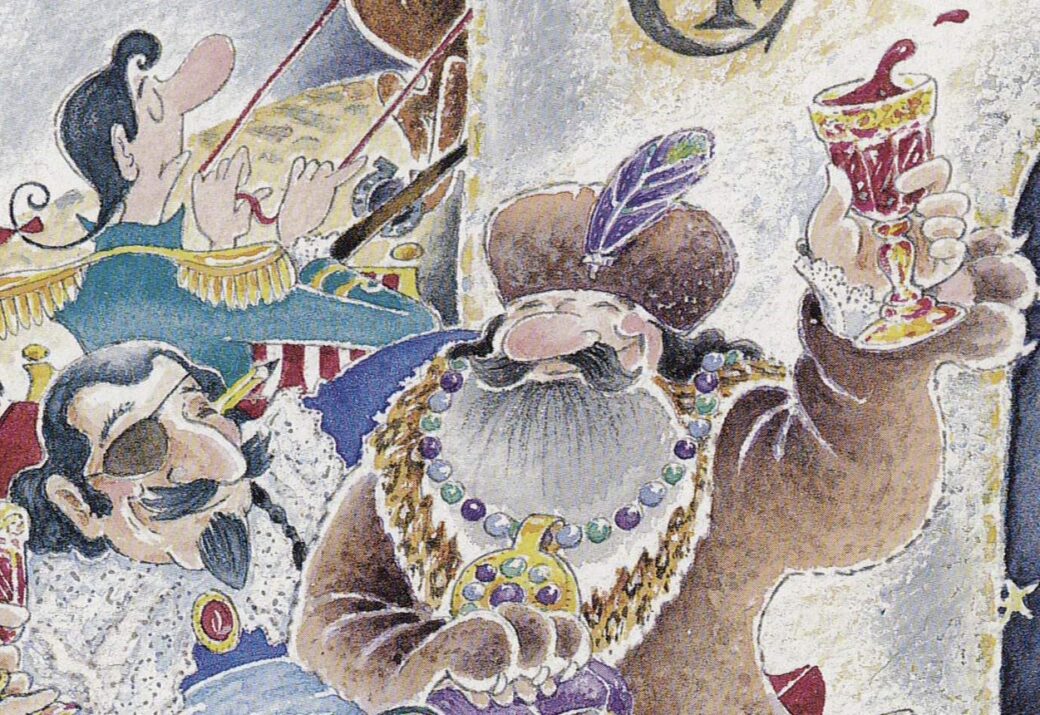This website uses cookies so that we can provide you with the best user experience possible. Cookie information is stored in your browser and performs functions such as recognising you when you return to our website and helping our team to understand which sections of the website you find most interesting and useful.
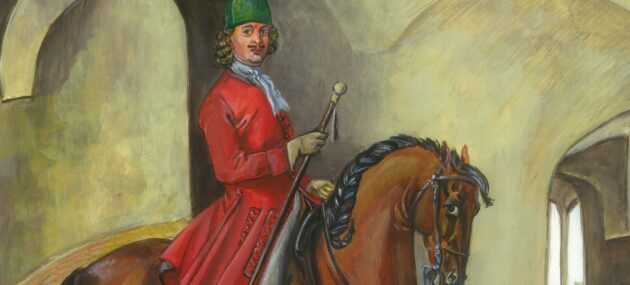
The Tsar on Horseback
Horses and snails are not animals that interact much in nature. In the Round Tower, however, they have come across each other occasionally since the earliest days of the tower.
The snail has famously lent its name to one of the most characteristic features of the Round Tower, the Spiral Ramp, which in Danish is called the snail staircase (“sneglegang”) since its winding interior resembles the shell of a snail. Spiral ramps also existed in a number of German Renaissance castles where they made it possible for the princes to be transported between different floors on horseback or by carriage.
The so-called riding spirals in the German castles were one of many sources of inspiration for the builders of the Round Tower, and some of the earliest writings about the Round Tower mention the possibility of driving or riding up the tower, for instance Jens Lauridsen Wolf’s (1583-1660) Diarium sive Calendarium ecclesiasticum politicum et occonomicum (Ecclesiastical, Political and Household Management Calendar) from 1648.
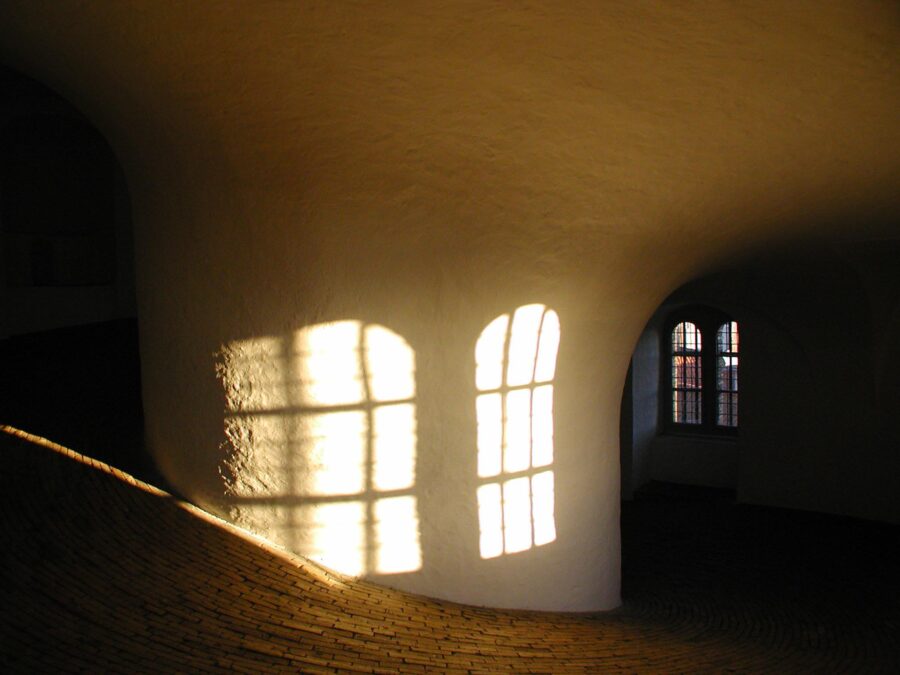
True Enough
A hundred years later, horses were also mentioned in connection to the Spiral Ramp. This time, a visit from the quadrupeds was not only referred to as a possibility but as something that had actually taken place. “This snail archway is of such a strength and breadth that it is even possible to ride and drive up and down the tower on horseback or by carriage,” the architect Lauritz de Thurah (1706-59) thus writes in his work Hafnia hodierna (Copenhagen Today) from 1748 and continues, ”an act that has been done, as is well known, by several of our kings, as well as the Russian Tsar PETER ALEXEWITZ in the year 1716, when His Majesty often rode up and down”.
We do not know much about the alleged equestrian visits of the Danish kings but the part with the Russian Tsar is true enough, although his horseback ride has become a carriage ride in some stories. “The floor is made of bricks, placed vertically with the narrow face exposed, and the many strolls the pedestrians have made throughout the years have not damaged it much”, the pastor Jacob Nicolai Wilse (1736-1801) writes about the Spiral Ramp in the late 1700s, “however, I doubt that anyone else than the great Tsar Peter has been riding up the tower”.
Constricting Etiquette
Russia and Denmark-Norway were allies during the Great Northern War, in which Denmark primarily participated in the years 1709-1720. Peter the Great stayed in Copenhagen for three and a half months, from mid-July to the end of October 1716, in order to participate in a planned invasion of Scania, which Denmark had lost to the Swedes 58 years earlier. 28,000 Russians and 23,000 Danish soldiers were living in camps surrounding the fortified capital, while the city itself was buzzing with war preparations and all kinds of rumours.
“Horrebow’s account must have been quite accurate, for he was present as the newly appointed head of the Observatory”
In the middle of September, however, the Tsar decided that he would not help Denmark-Norway reclaim Scania, Halland and Blekinge after all. Thus, the relationship between Peter the Great and the absolute Danish King Frederik IV (1671-1730), which had not been great to begin with, now took a turn for the worse. However, it cannot have been completely ruined since the Tsar decided to stay in Copenhagen for another month. He spent his time on various amusements, such as a masquerade on the King’s birthday, an ordination in the Church of Our Lady – and, as already mentioned, a visit to the Round Tower, to which he came riding on a Russian horse from his lodgings in what is now the National Museum.
There are several examples of Peter the Great having difficulties conforming to the extensive rules of etiquette that characterised the Danish court at the time and it is conceivable that it should be regarded as a manifestation of his forthright behaviour that he continued up the Spiral Ramp on horseback. One account of the event sees the unusual visit as an example of the way in which “His peculiar caprices could assuredly often arouse amusement”, and at all events, the ride was noticed to such a degree that it has become one of the best-known stories about the Round Tower.
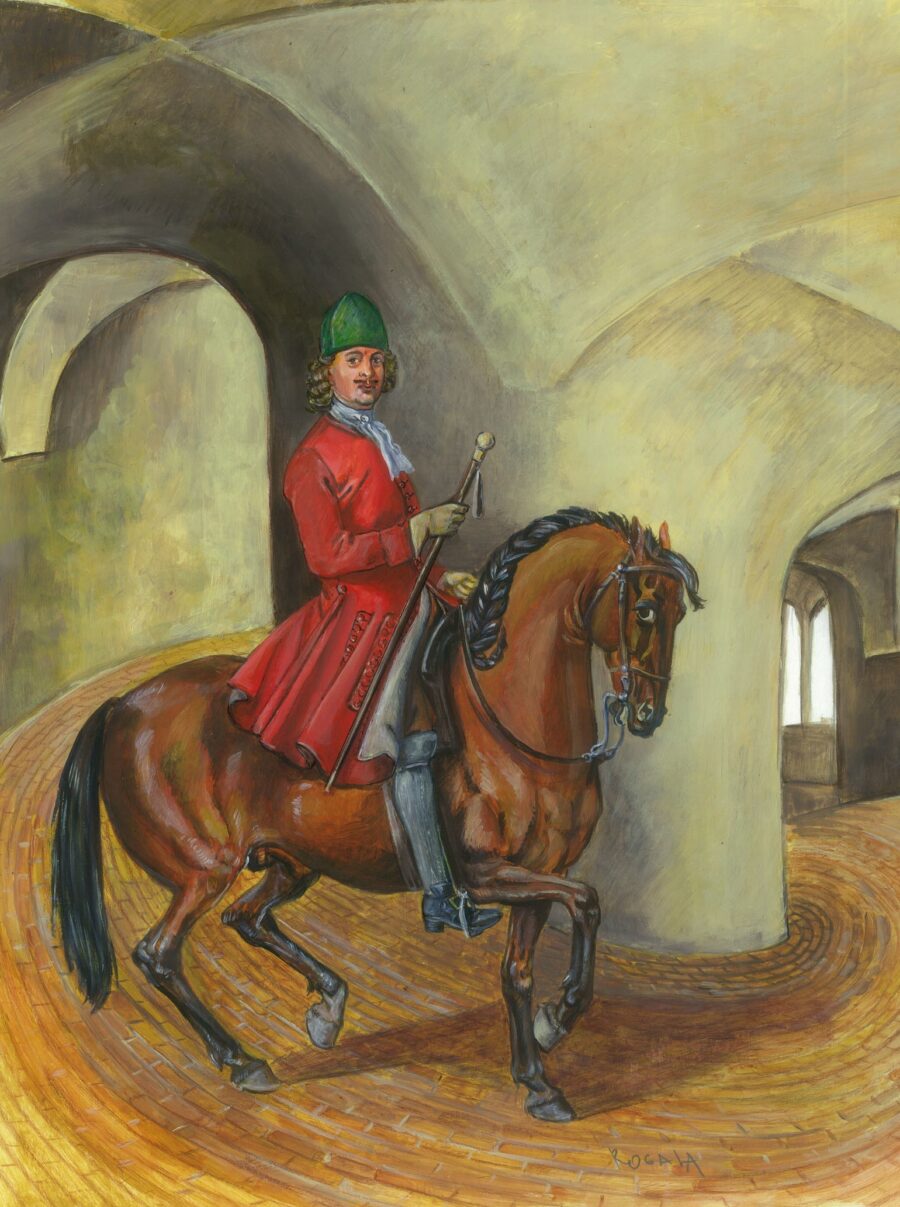
Four Wheels and Six Horses
It already started being a famous story in the 1700s. Thus, the topographic author Nicolai Jonge (1727-89) almost rewrites Lauritz de Thurah’s description from 1748 word for word, albeit Jonge is of the opinion that only “some of the Danish kings” climbed the tower in a horse-drawn carriage. Lauritz de Thurah himself based his account on the astronomer Peder Nielsen Horrebow’s (1679-1764) Latin text in the third volume of the book Opera mathematico-physica (Mathematical-Physical Works) from 1741.
Horrebow’s account must have been quite accurate, for he was present as the newly appointed head of the Observatory located at the top of the tower, at the time when the Tsar and Tsarina were visiting. Peter the Great, who had a great interest in astronomy, even tried to persuade Horrebow to go back with him to St. Petersburg, which had been declared the new capital of Russia a few years earlier. Unfortunately Horrebow’s description of the visit is rather laconic, however, he does mention that Tsarina Katharina, whom Peter the Great had married officially four years earlier and who was with him in Copenhagen, was carried in a four-wheeled carriage that was drawn by six horses (”vecta curru qvatuor rotarum a sex eqvis tracto”).
Shrouded in Mystery
Posterity has found it difficult to believe the last part of the story though. It seems to be symptomatic that the observer G. F. Ursin’s (1797-1849) translation of Horrebow’s description is simply incorrect when he, in his Historisk Beretning om Universitæts-Observatoriet paa Rundetaarn (Historical Account of the University Observatory at the Round Tower) from 1826, states that, “P. Horrebow, as eyewitness, relates that Peter the Great, who often visited the observatory, rode up to it and down again, and was even once accompanied by his consort Catharina, who was carried in a carriage that was drawn by four horses”.
Several of the circumstances surrounding the Tsar and Tsarina’s visit to the Round Tower are shrouded in mystery. One encounters the 1 as well as the 2 October as possible dates for the event, the time of the day is somewhat enigmatic, and to add to the confusion a manuscript, which was later published under the designation ”contemporary” but apparently was pieced together a bit later, claims that the Tsarina drove a two-wheeled cart pulled by one horse.
“The visit Peter the Great made to the Round Tower together with the Tsarina was not his only one”
Den Kiøbenhavnske Post-Rytter (The Copenhagen Post-Rider), which was published in October 1716, seems to be the most reliable. The newspaper wisely avoids mentioning the number of horses in front of the Tsarina’s carriage and delivers what appears to be a trustworthy résumé of the visit. The article begins with the words, “Denmark. Copenhagen”, after which it immediately starts the actual description, which goes, “The first day of this month it has most pleased Their Tsaric Majesties around one o’clock to take sight of the wonderful library above the Trinity Church / and afterwards at the astronomical Round Tower / where His Tsaric Majesty rode up on horseback and Her Tsaric Majesty was taken up by carriage / to gaze at the course of the stars / and in particular at the planets Venus and Jupiter / by the help of mathematical instruments / much to Their Majesties’ delight”.
Several Visits
Another first-hand account, a letter written by a navy chaplain, also notices Peter the Great’s interest in the scientific work of the Observatory. ”He and the Tsarina drove up and down the Round Tower and beheld all the astronomical objects”, the letter thus relates. But even the main reason for the Tsar’s visit is disputed. It has also been suggested, thus, that the actual reason for the Tsar’s climb up to the top was that his wished to inspect his many troops outside of the ramparts of Copenhagen.
The visit Peter the Great made to the Round Tower together with the Tsarina was not his only one, but whether he made one, two or several more visits is not completely clear. However, there is no need to quarrel about the fact that it was him, the Tsar of Russia, that was riding up and down, even though the Danish cartoonist Storm P. (1882-1949) lets the following exchange of words play out in one of his cartoons, “There is nothing wrong with your memory. – Certainly not – I clearly remember when King Frederik VII rode up the Round Tower!”
